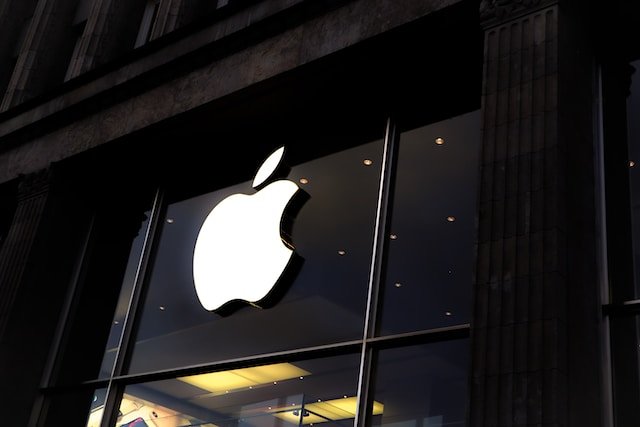Steve Jobs was the visionary and driving force behind the creation and success of Apple. However, it is important to recognize that the success of Apple was not solely due to Jobs’ individual efforts. No matter how successful entrepreneurs may be, they do not achieve this result independently. How did steve jobs build apple
In the case of Apple, Steve Jobs had a crucial partnership with Steve Wozniak, who co-founded the company and invented the model for the first personal computer. Wozniak’s technical expertise and innovative ideas complemented Jobs’ visionary mindset and together they were able to create groundbreaking products.
The birth of Apple can be traced back to a personal relationship between Jobs and Wozniak. After inventing one of the first microcomputers, Jobs and Wozniak approached their bosses at Atari and HP, but neither company was interested in microcomputers at that time.
Recognizing the potential of their invention, Jobs and Wozniak decided to take matters into their own hands and founded Apple Computers in 1976. With the help of Mike Markkula, who provided access to venture capital, they officially incorporated the company a year later.
How did Steve Jobs build Apple
The creation of Apple Inc. was not just a result of Jobs and Wozniak’s technical skills, but it was also heavily influenced by the support and resources provided by Mike Markkula.
Markkula played a crucial role in the successful launch of Apple by providing access to venture capital. His financial backing allowed Jobs and Wozniak to turn their vision into a reality. Additionally, the timing of Apple’s emergence was also a key factor in its success.
The rise of Apple coincided with the emergence of a countercultural community that shared a common vision of democratizing computing and empowering computer users. This community, which included Jobs and Wozniak, was determined to challenge the dominance of mainframe systems like IBM and other producers.
The first Apple computer was actually put together by Wozniak to impress members of the Homebrew Computer Club. This early recognition and support from like-minded individuals provided a strong foundation for Apple’s growth.
Strategic Decisions Made by Steve Jobs
How did steve jobs build apple, Steve Jobs played a pivotal role in the growth and success of Apple. As the charismatic folk hero and visionary of the company, Jobs had a keen understanding of consumer needs and preferences. He was able to anticipate market trends and lead Apple in the direction of innovation.
Under Jobs’ leadership, Apple made several strategic decisions that set it apart from its competitors. Jobs believed in creating products that were not only technologically advanced but also beautifully designed. For example, he oversaw the development of the Macintosh, which revolutionized personal computing with its user-friendly interface and graphical capabilities.
Jobs also recognized the potential of the music industry and saw an opportunity to create a digital music platform that would change the way people listened to music. Hence, he spearheaded the development of the iPod and iTunes, which transformed Apple into a leader in the digital music space. The success of Apple Inc. can be attributed to the combined efforts and contributions of Steve Jobs, Steve Wozniak, and Mike Markkula.
Jobs’ Innovative Approach to Technology
Steve Jobs had a unique and innovative approach to technology that set Apple apart from its competitors. He believed in creating products that were not only technologically advanced but also intuitive and aesthetically pleasing.
Jobs understood that technology alone was not enough, it needed to be seamlessly integrated into people’s lives. To achieve this, Jobs focused on simplifying complex technology and creating products that were user-friendly and visually appealing.
He believed that technology should be accessible to everyone, not just tech-savvy individuals. This belief drove him to create products like the Macintosh and the iPhone, which had intuitive interfaces that made them easy for anyone to use.
How did Steve Jobs Build Apple: The Journey from Garage to Tech Giant
The journey of Apple from a humble garage startup to a global tech giant can be attributed to the extraordinary vision and leadership of Steve Jobs. Jobs co-founded Apple in 1976 with Steve Wozniak and Mike Markkula. Together, they laid the foundation for what would become one of the most successful and influential technology companies in the world. Under Jobs’ leadership, Apple experienced several defining moments that propelled its growth and success.
One of these moments was the development and launch of the Macintosh in 1984, which introduced the concept of a user-friendly graphical interface and revolutionized personal computing. Another defining moment in Apple’s history was the acquisition of NeXT, Steve Jobs’ company, in 1997.
This acquisition marked Steve’s return to Apple and laid the groundwork for future innovations, including the revolutionary iPod, iPhone, and iMac. Another key factor in Steve Jobs’ success and the growth of Apple was his ability to cultivate strong relationships and partnerships. One such relationship was with Steve Wozniak, his co-founder at Apple.
Jobs and Wozniak complemented each other’s skills and worked together to develop and refine Apple’s early products. Jobs also formed key partnerships with designers, engineers, and software developers who shared his vision for creating innovative and user-centric products.
Additionally, Jobs recognized the importance of marketing and branding in building a successful company. He understood the power of storytelling and creating a compelling brand image.
This was evident in the early days of Apple when Jobs and Wozniak promoted their products through media stories that emphasized an alternative, anti-corporate stance. They positioned Apple as a company that embraced creativity, individuality, and counterculture, which resonated with consumers who were seeking an alternative to the dominant corporate culture of the time.
The Challenges Faced in Building Apple
Building Apple was not without its challenges. Steve Jobs faced numerous challenges throughout his journey of building Apple. One challenge was the competition from established technology companies, such as IBM. Despite the challenges, Steve Jobs and his team at Apple persevered and thrived by focusing on innovation, user experience, and creating a strong brand.
They understood that to stand out in the market, they needed to offer something unique and compelling. They also faced challenges in product development, such as the initial struggles with the Macintosh and the difficulties faced during the development of the iPhone.
However, Steve Jobs and his team embraced these challenges as opportunities for growth and learning. They continuously applied Bloom’s taxonomy, a framework for learning, to analyze and improve their strategies. Additionally, Steve Jobs had a natural ability to learn from failures, experiences, and the people he encountered or dealt with. He was known as a “learning machine” and constantly sought to expand his knowledge and expertise.
The Acquisition of NeXT and Steve’s Return to Apple One pivotal moment in Apple’s history was the acquisition of NeXT by Apple, which marked Steve Jobs’ return to the company he co-founded. This acquisition was a significant turning point for Apple and played a crucial role in its success. NeXT brought with it valuable technology and expertise that would shape the future of Apple.
The Impact of Steve Jobs on the Tech Industry
Steve Jobs’ leadership and vision had a profound impact on the tech industry.
He revolutionized multiple markets, including mobile, music, tablet, and personal computing, with products like the iPod, iPhone, and iMac. By introducing groundbreaking technology and innovative design, Jobs transformed the way people interacted with these devices.
He understood the value of strong brand vision and leadership, as exemplified by the launch of iTunes. Under Jobs’ leadership, Apple became the largest corporation in the United States and set new standards for product innovation and user experience.
How did steve jobs build apple, Steve Jobs successfully built Apple by focusing on key factors such as innovation, user experience, brand development, and a strong leadership style. Steve Jobs built Apple by focusing on key factors such as innovation, user experience, brand development, and strong leadership. Steve Jobs built Apple through a combination of strategic leadership, innovation, and a unique approach to product development.
One of the key factors in Steve Jobs’ success in building Apple was his ability to embrace innovation.
This is evident in his approach to product development and design. Jobs pushed the boundaries of what was possible and constantly challenged his team to think differently and disrupt the status quo.
Another critical factor in Jobs’ success was his focus on delivering an exceptional user experience.
He understood that technology alone was not enough – it had to be seamlessly integrated into people’s lives and provide a user-friendly experience. Jobs also had a clear vision for the Apple brand and its potential to shape new market spaces.
Legacy of Steve Jobs: Transforming Apple into a Global Brand
Steve Jobs left behind a lasting legacy by transforming Apple into a global brand. Through his strategic leadership and innovative mindset, Jobs took Apple from the brink of failure to become one of the most valuable and influential companies in the world.
Jobs’ ability to envision and create products that revolutionized industries is a testament to his visionary leadership. Under Jobs’ leadership, Apple disrupted multiple markets by introducing groundbreaking products like the iPod, iPhone, and iMac. These products not only changed the way people interacted with technology but also set new standards for innovation and user experience.
Jobs’ relentless pursuit of excellence and his insistence on integrating hardware, software, and design seamlessly together created a unique and cohesive user experience that set Apple products apart from the competition. Furthermore, Jobs understood the importance of brand development in creating a strong and loyal customer base.
How did steve jobs build apple, He focused on building a brand that was known for its quality, innovation, and design. Jobs believed in the power of branding and created a strong brand identity for Apple that resonated with consumers.
Read also: How Business Line of Credit Works




